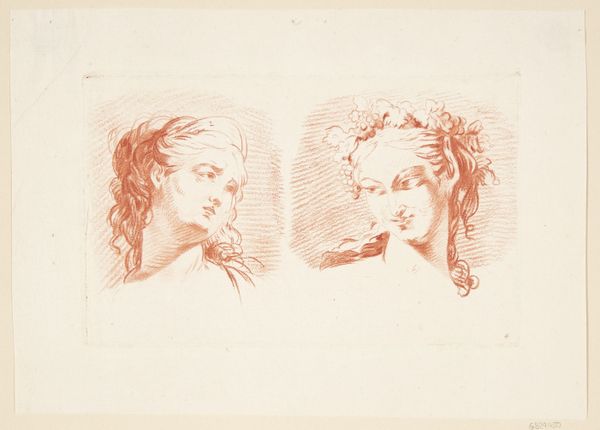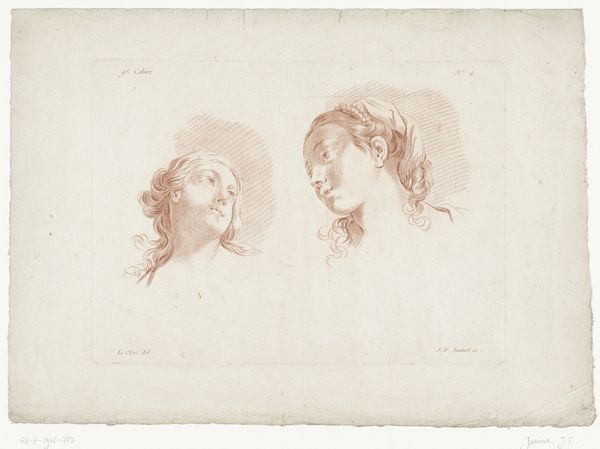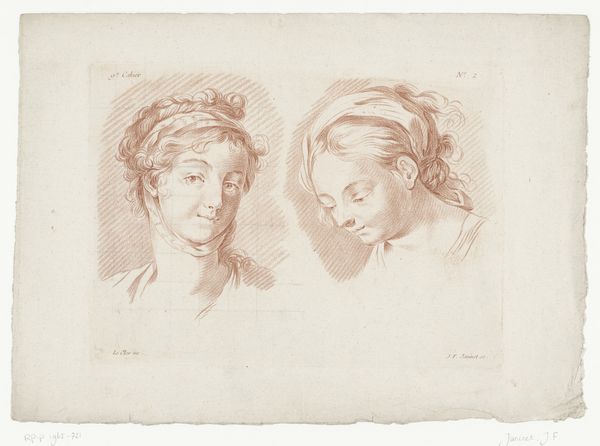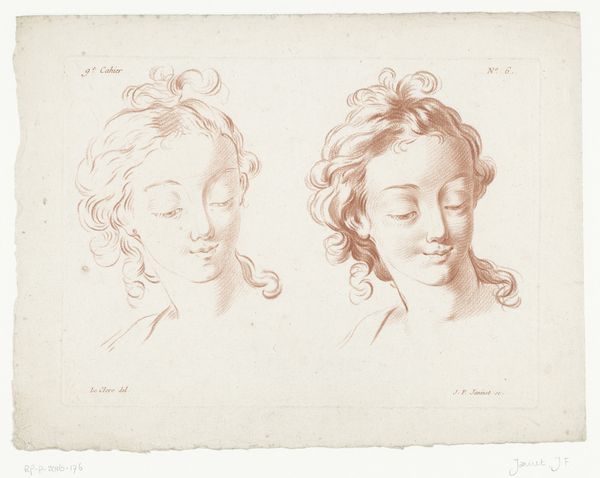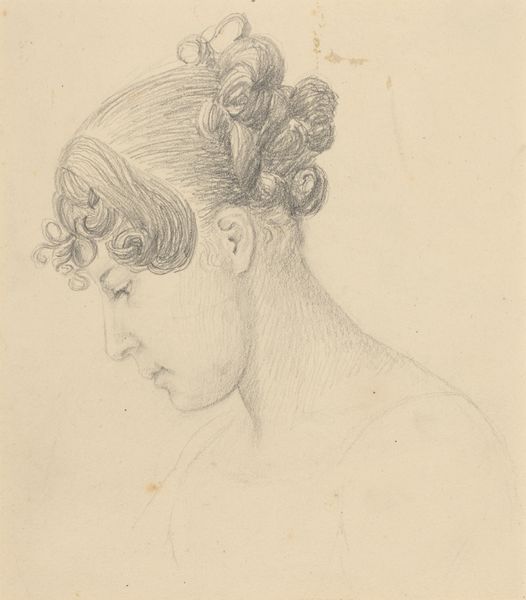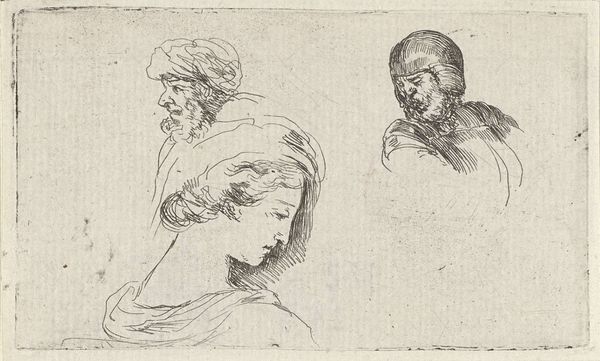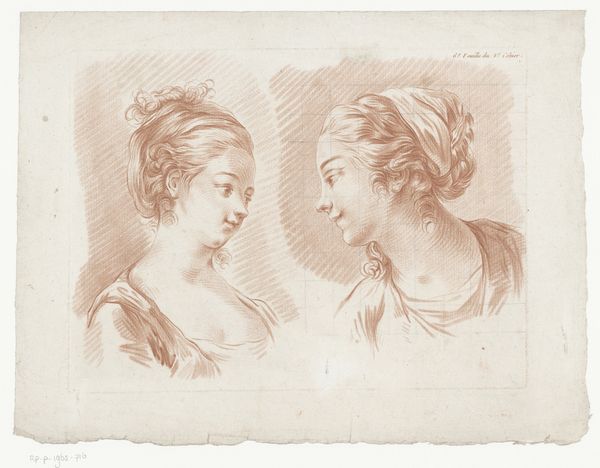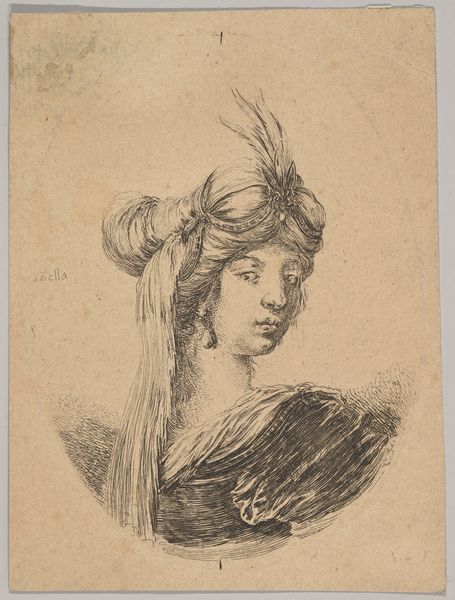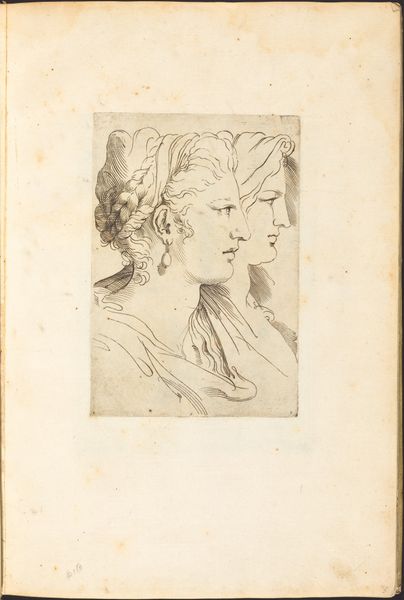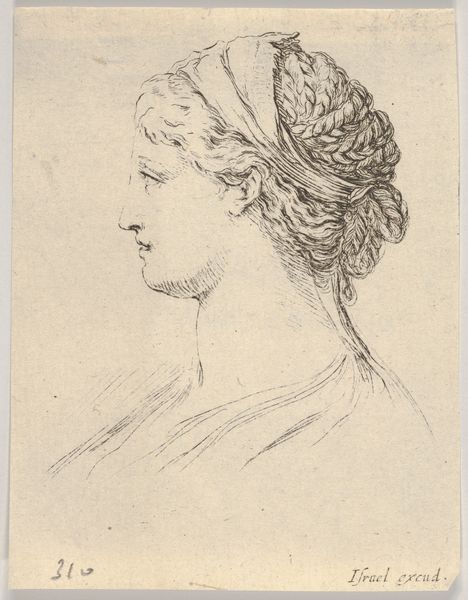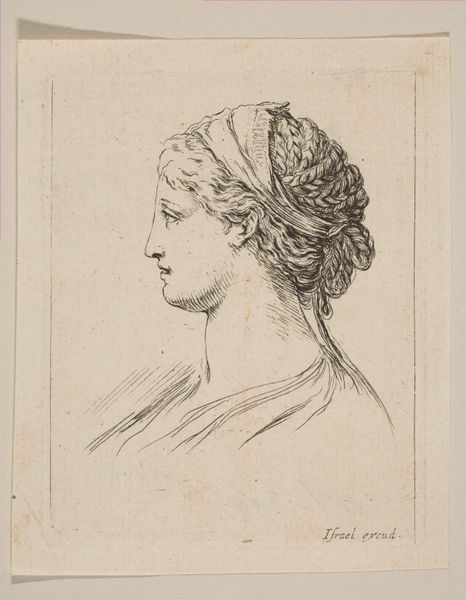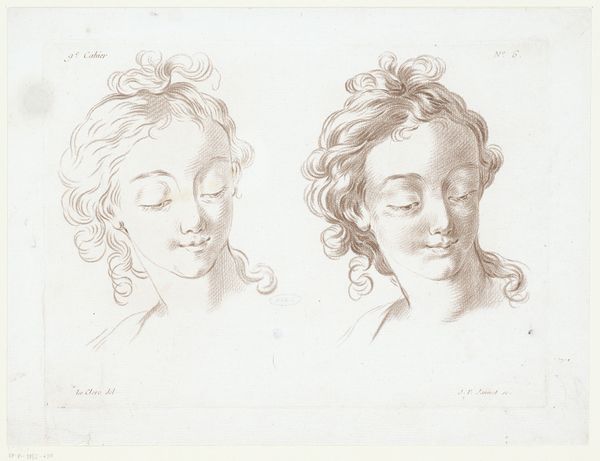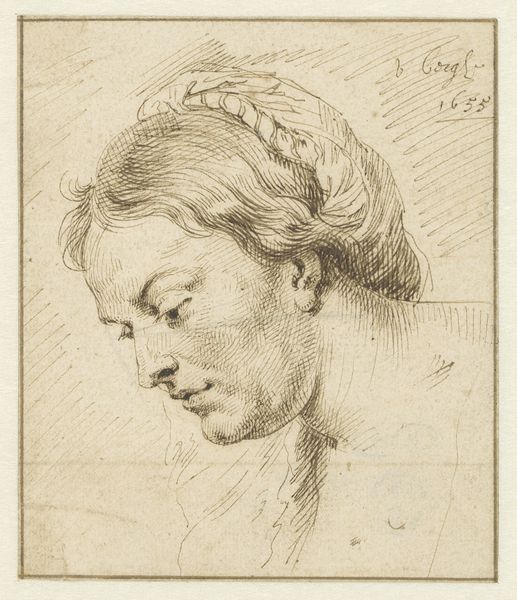
drawing, pencil
#
portrait
#
pencil drawn
#
drawing
#
pencil sketch
#
charcoal drawing
#
figuration
#
pencil drawing
#
romanticism
#
pencil
#
portrait drawing
#
pencil work
#
history-painting
#
academic-art
Dimensions: height 194 mm, width 245 mm
Copyright: Rijks Museum: Open Domain
Curator: Here we have "Twee vrouwenkoppen," or "Two Female Heads," a pencil drawing attributed to Giuseppe Bernardino Bison, dating sometime between 1772 and 1844. Editor: The muted tones give it such a pensive feel, almost melancholic. The faces are rendered with delicate lines, yet they carry a weight, don't you think? Curator: Bison was a prolific Italian painter and draftsman. While he worked across several genres, his historical and mythological subjects reveal a preoccupation with idealised forms—this drawing sits within that paradigm, wouldn’t you agree? These are archetypes rather than specific individuals. Editor: Precisely, and that abstraction invites projection. I’m particularly struck by how their averted gazes deny the viewer direct engagement. Is this a subtle commentary on the limited agency afforded to women within 18th and early 19th century society? Curator: An interesting point. Or it may be that academic art prized universally recognizable emotions above all else, that the social circumstances behind Bison’s sketches are almost irrelevant given the pressure of his contemporaries towards classical or idealized beauty standards. Editor: But surely that pressure reflects the deeply ingrained societal expectations. Even in portraying "universal" emotions, there's a deliberate selection of who gets to embody those emotions and how. Their slight disaffection reflects women's restricted access to cultural and political power at the time. Curator: A compelling consideration. What Bison might have thought or intended remains elusive, and yet he had clear aesthetic preoccupations tied to institutional orthodoxies. What these sketches communicate to us, in this historical moment, reflects our concerns, I'm quite sure. Editor: Absolutely, and by understanding the constraints under which Bison worked—the academies, the patronage system, the prevailing notions of beauty—we can appreciate the drawing as not just a technical exercise, but as a document, however indirect, of its time. Curator: Yes, seeing art as situated within a web of social, cultural, and aesthetic factors illuminates how it shapes and is shaped by its era. Editor: The opportunity to think about the relationship between these beautifully sketched, softly melancholy faces and the pressures, possibilities, and limitations that might have framed their existence—it’s quietly devastating and deeply human.
Comments
No comments
Be the first to comment and join the conversation on the ultimate creative platform.
